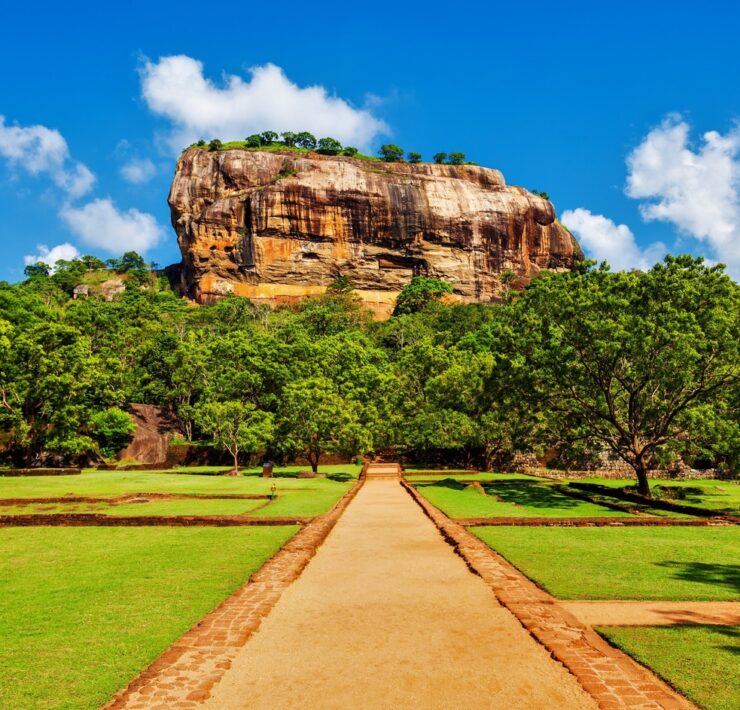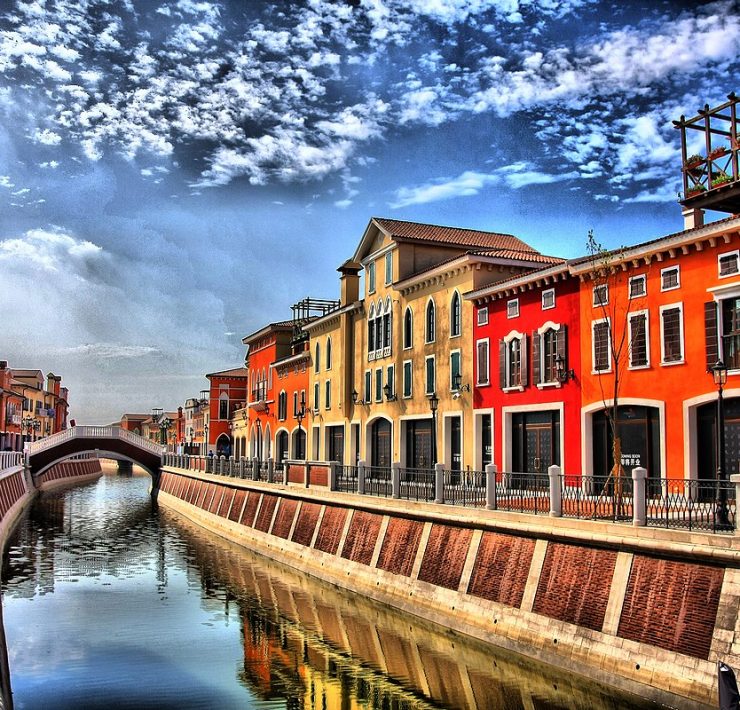The Great Wall of China, the Taj Mahal, Machu Picchu and the Great Pyramid of Giza are just few of the names that come to mind when talking about architectural wonders of the ancient world. But unknown to many, there are equally numerous other impressive structures that ancient human civilization has left behind for us that will certainly leave you completely stunned. Without putting you in suspense for too long, here are 10 of the little-known but amazing structures of the ancient world.
1. Leshan Giant Buddha, China
The size of this structure and the intricate expertise that went into its construction will definitely leave you amazed! Considered the world’s largest stone-carved Buddha, this statue stands at more than 232 feet with a shoulder spanning over 90 feet. The Leshan Giant Buddha is located at the meeting point of three rivers in China’s Sichuan Province and its construction, which started in 713, was said to have taken over 90 years to complete, with thousands of people working on it. Hai Tong, a monk, had recommended the statue as a mean of placating water spirits that were thought to be responsible for the many boat mishaps during the period. It will interest you to know that the coiled hairs of the Buddha form part of a drainage system running down the statue.
2. The Olmec Heads, Mexico
These are 17 stone-carved, gigantic heads weighing from six to 50 tons each. The stone heads dating back to the period between 1500 and 1000 BC feature distinctive headdresses, probably indicating they were representations of great Olmec rulers of the past. There is also the thought that the heads might indicate existence of highly developed African civilization in the area in the ancient times, judging by the close semblance of some of the heads’ face outline to an African male’s.
3. Temple of Hephaestus, Greece
Dedicated to Hephaestos, the god of fire, the Temple of Hephaestus is one of the top places of attraction in Greece which many people know little or nothing about. The structure erected in 450 AD and sitting atop a little hill is situated in Thission, an area drawing several millions of visitors every year. Also known as Theseion, the temple was built with marble in the Doric style of architecture and features 34 columns. It is very surprising that the Temple of Hephaestus has remained rather obscure despite its appeal and description as one of the world’s best preserved temples of the ancient world.
4. Gobekli Tepe, Turkey
This ancient site plays host to stone pillars and other structures having carvings of different types of predatory animals. With radiocarbon dating tracing its age to about 10,000 B.C., Gobekli Tepe is the oldest religious edifice to have been discovered. The implication of this dating is also that these structures were built during an age when humans were thought to be primitive hunter-gatherers, before even starting agriculture. So it leaves you wondering how the structures, especially the stone pillars weighing up to 20 tons, were constructed without metal tools.
5. Sacsayhuaman, Peru
This is an enormous fortress in the Peruvian city of Cuzco that will further leave you marveling at the advanced engineering skill of the ancient people. Sacsayhuaman features three dry stone walls made of large rocks that were extracted from a quarry located more than three kilometers away from the fortress, with the biggest of these rocks measuring about 120 tons! Spanish colonists were so stunned when they saw the structure they thought it was constructed by demons. The engineering proficiency that went into the construction of the stone fortress has ensured it remained intact till this day despite the numerous earthquakes that have ravaged the area.
6. Temple of Hercules Victor, Rome, Italy
Situated in Rome’s Forum Boarium, the Temple of Hercules Victor is a rotund temple constructed around the 2nd Century in classic Greek style of architecture. It comprises a cella and ring of 20 Corinthian columns, which provided support for the roof and the ancient architrave. The cella and 19 of the columns remain to this day. It is unsure what the temple was initially called, with the present name being as a result of its connection with the Hercules and Cacus legend. The Temple of Hercules Victor is regarded as the earliest-surviving marble edifice in the whole of Rome.
7. Chavin de Huantar Ruins, Peru
A World Heritage site, the Chavin de Huantar Ruins in Peru is believed to have been built circa 900 B.C. by the Chavin culture, which preceded the Inca. It is thought to have been used as a place of assembly and worship. Fragments and artifacts from the original setup are what remain today. Inter-tribal hostilities and natural hazards such as earthquakes are two of the reasons that have been suggested as probably being responsible for the vanishing of the Chavin people.
8. The Nalanda Ruins, India
The area which is today described as the ruins of Nalanda was originally the site of a Buddhist university set up around 450 A.D. in what is today’s Bihar region in India. At its apogee, this higher institution of learning boasted of more than 2,000 faculties and had a student population exceeding 10,000. Buddha and Mahavira are two of the prominent people that visited Nalanda, which is regarded as the longest-running university in the history of the country, during its times. The institution was reduced to ruins by Muslim assailants from Turkey in 1193, with many teachers and students killed.
9. The Lost City of Mohenjo-Daro, Pakistan
This area is believed to have been a large urban location several thousands of years ago, flourishing for more than one thousand years before being inexplicably abandoned around 1,500 B.C. Its ruins were discovered in 1921 when an excavation was carried out in the floodplains of the Indus River. A look at Mohenjo-Daro reveals a planned city with sophisticated features that were way ahead of its time. It will amaze you to learn that some of its homes here had indoor toilets, with sewage drains running underneath its streets.
10. Chogha Zanbil, Iran
At more than three thousand years old, Chogha Zanbil is definitely an architectural wonder of the ancient world. It is a massive ziggurat or step temple built by the Elamite King Untash Napirisha around 1250 B.C. in honor of the god Inshushinak. The Chogha Zanbil, one of a handful of ziggurats not in Mesopotamia, is in a virtually pristine condition and ranks among the most awe-inspiring monuments in modern Khuzestan. It was placed on the list of UNESCO World Heritage sites in 1979, making it the first to attain that status in Iran.
When On Earth Magazine is for people who love travel. We provide informative travel guides, tips, ideas and advice regarding places to see, things to do, what to taste, and much more for world travelers seeking their next dream vacation destination.






